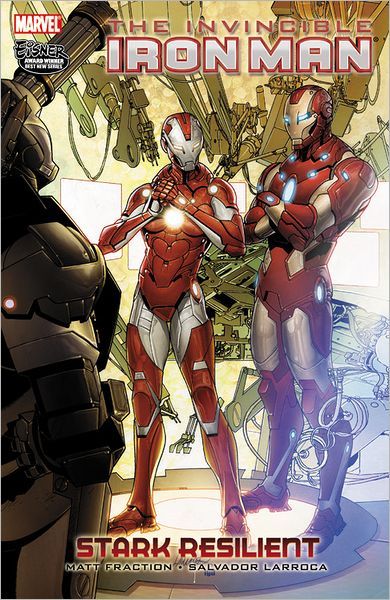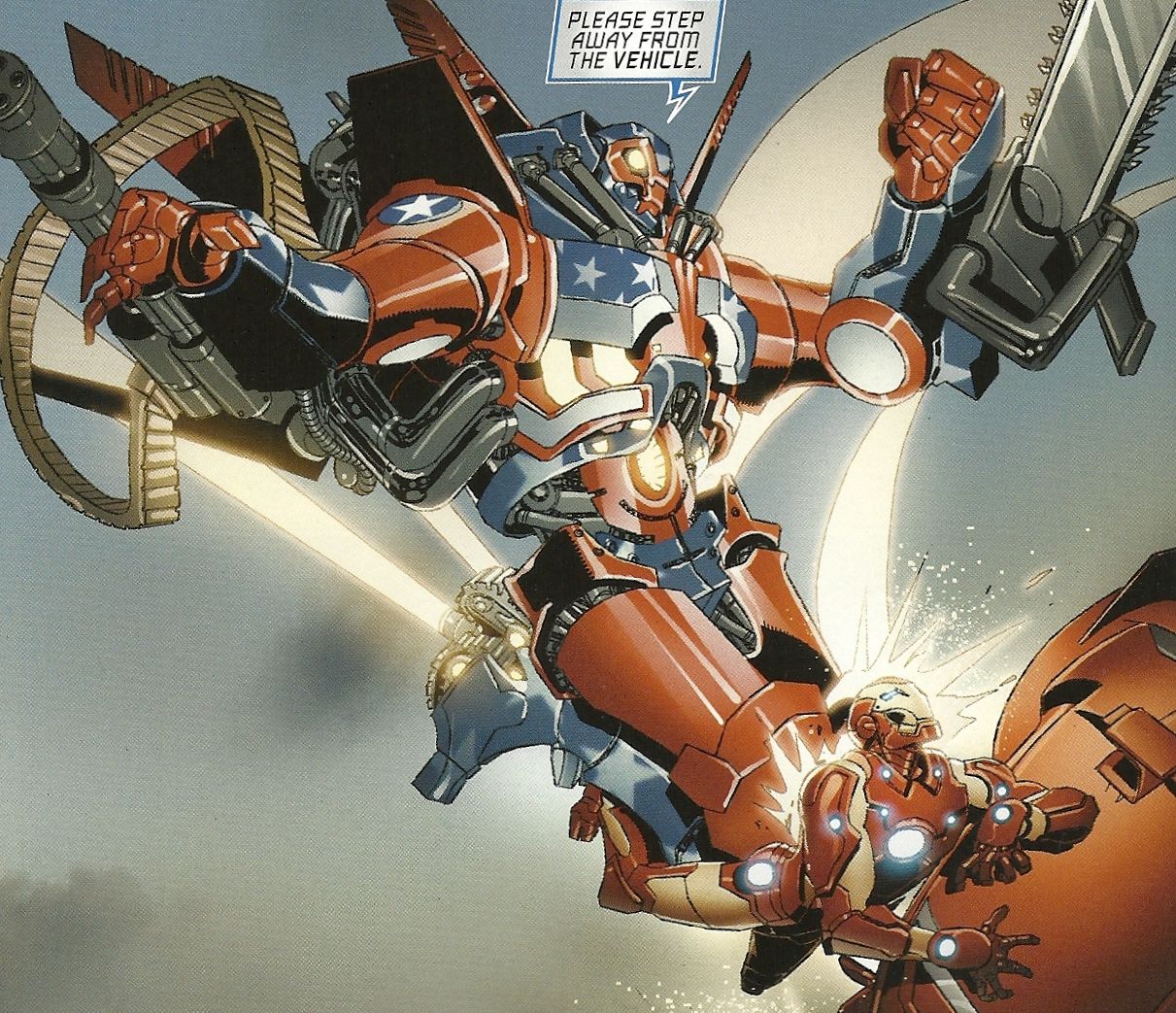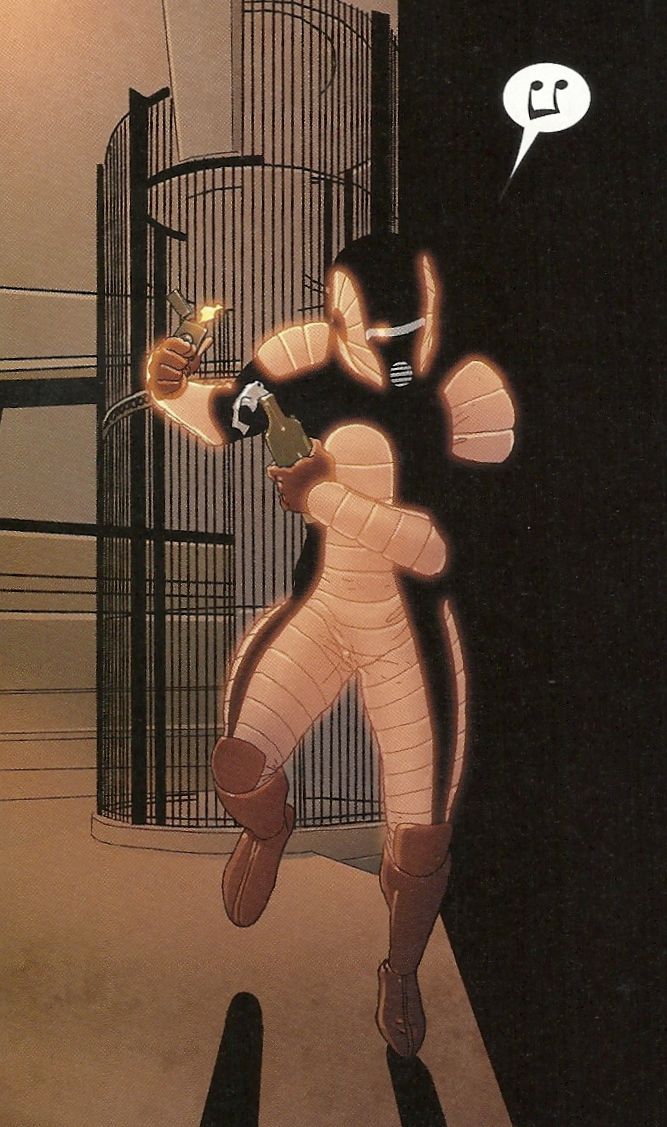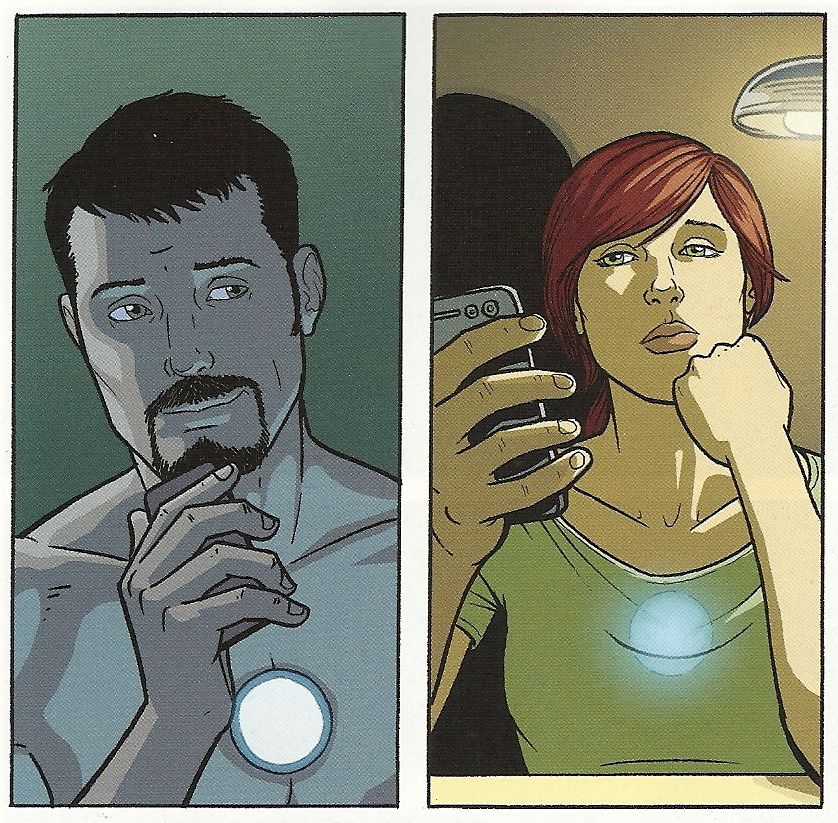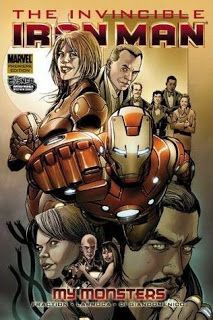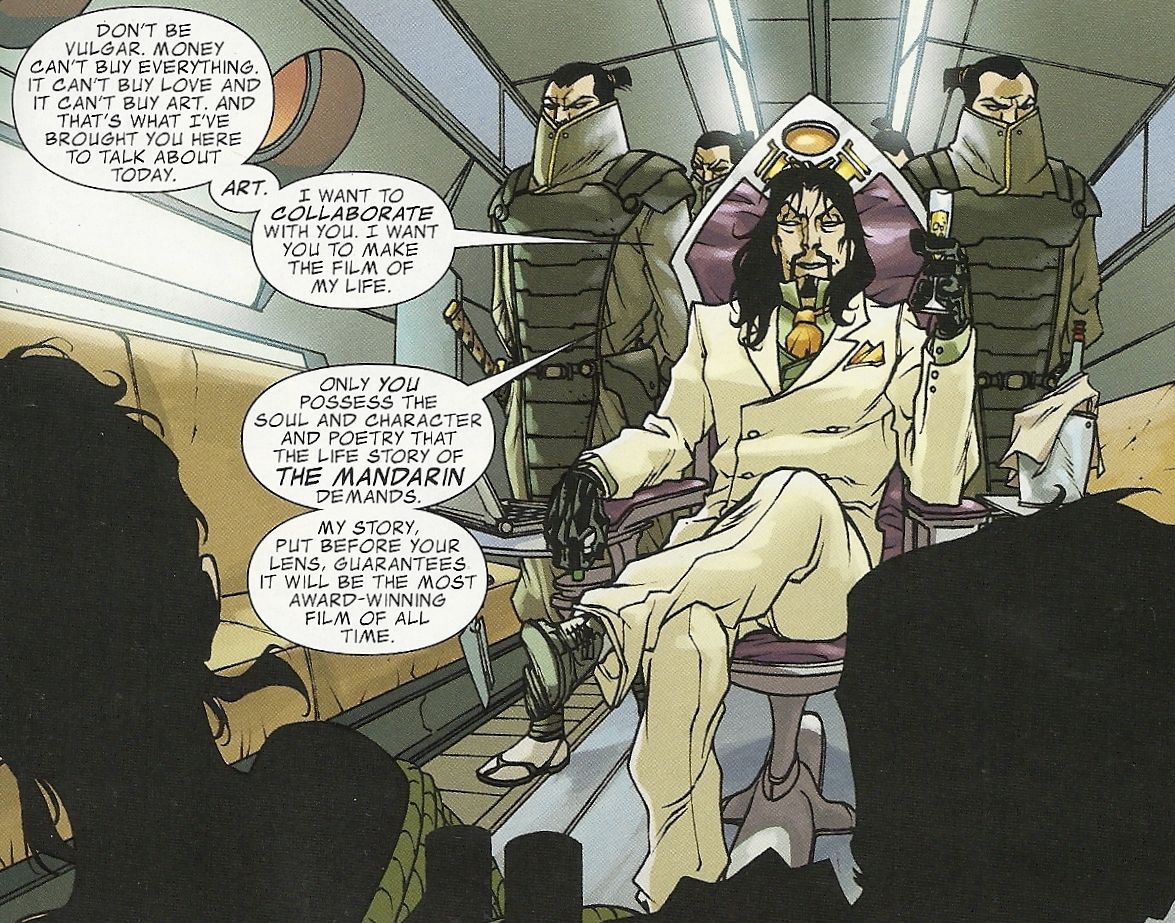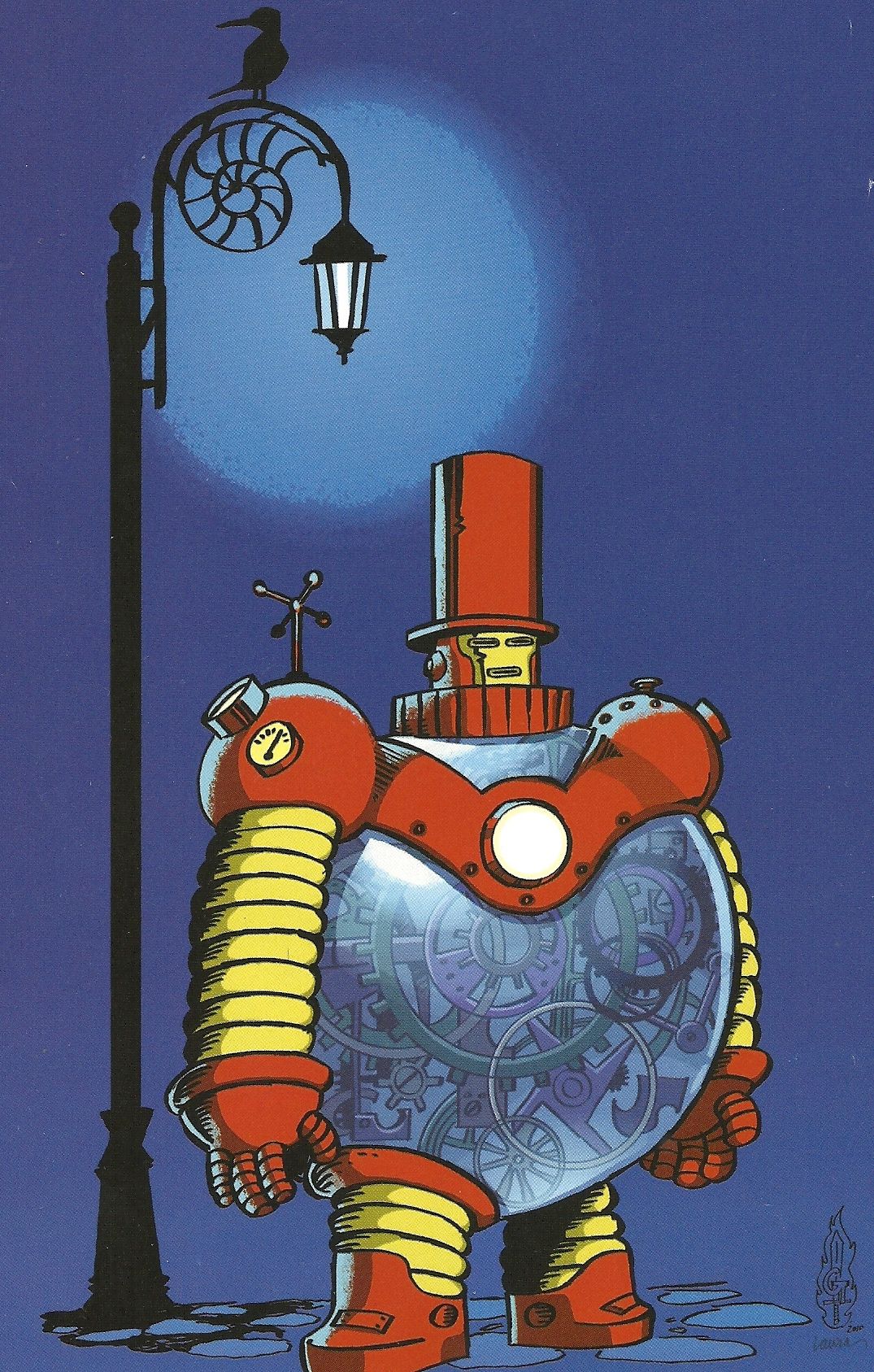Today we continue our look at Matt Fraction and Salvador Larroca's The Invincible Iron Man run with the next three volumes, which contain another new direction for the series, and the several instances of people other than Larroca drawing the series for the first time.
Vols. 4 and 5: Stark Resilient Books 1 and 2 (#25-33 ): Like the 12-issue story arc "World's Most Wanted," "Stark Resilient" is such a long story arc that it takes up two trade collections.
When we last left Stark, his friends and allies had just reinstalled a back-up of his brain into his body after he was left in a vegetative state by his heroic efforts to deny Norman Osborn access to his most dangerous secrets. While the first two years of the book were devoted to following the Iron Man through-line of the publisher's massive Civil War-to-Siege storyline, with the 25th issue Matt Fraction and Salvador Larroca essentially get to start over.
With Stark Industries no more and Stark no longer involved with S.H.I.E.L.D., our hero looks to set up an entirely new endeavor (see the title of the story for the new company's name), one that looks a lot more like the tech start-up it is than the old-school company the billionaire used to run.
Stark's new plan is to gather a handful of brilliant scientists (which gives the book a newer, bigger supporting cast) and, with a company led by Pepper Potts, begin developing repulsor technology (i.e. what makes Stark's chest-disc glow and Iron Man's palms shoot laser beams) into consumer applications, like a car that doesn't run on fossil fuels.
While he's setting up his new company, which involves a lot of meetings and charm given that he's now flat broke, new/old enemies are lining up against him. These are Justine Hammer, daughter of Iron Man villain Justin Hammer (who was the main antagonist in Iron Man 2, making Resilient, like Five Nightmares, a kinda-sorta continuation of aspects of a film's conflict), and her daughter Sasha, who's the same Sasha who was running around with the Stane boy in the book's first arc and, we learn, the daughter of Iron Man's archenemy The Mandarin.
Their scheme is a fairly standard one for Iron Man enemies: to defeat Stark in business as well as on the battlefield.
So while he's turned his back on war-fighting in favor of R.T.-powered vehicles, they've developed Detroit Steel, a giant robot suit of armor that defense-contractor pilots can use. Their paint jobs depend on the country they're serving, but the original is red, white and blue, and looks an awful lot like Michael Bay's Optimus Prime if you squint.
So earlier in the run, Fraction played with the evolution of war-fighting into terrorism; here he deals with independent contractors and drones, as Book 2's big set-piece is a test of an R.T.-powered race car driven by Stark himself (again, shades of Iron Man 2) that is interrupted by Detroit Steel and a sky full of drones, which Stark (in his latest new costume), Pepper Potts (in her new Rescue costume) and War Machine all battle.
Meanwhile, another classic Iron Man villain shows up: Spymaster. He has a somewhat goofy-looking new design, which involves a mostly glowing costume. (Should someone whose job is spying really have a costume that glows like a neon sign?) He's working with a mole in Stark's new company to sabotage it from within, at the behest of the Hammer family.
By the last page of Book 2, we see Ezekiel Stane shaking hands with The Mandarin, and Fraction drives home the fact that all of Iron Man's biggest villains (or at least their progeny) are lining up against him.
The Book 1 trade ends with another variant-cover gallery (including film covers from Iron Man 2, a Herb Trimpe cover and a so-so "Iron Man By Design Variant" drawn by one of my favorite artists, Ronnie Del Carmen). There's also a four-page behind-the-scenes article about the creation of this latest Iron Man armor, which was designed not by Larroca, but by Marvel Studios designer Ryan Meinerding.
The end of Book 2 includes two short "back-up" stories drawn by Jamie McKelvie and colorist Matthew Wilson, which are fun little character essays, and gorgeous to look at, even if they have the downside of demonstrating how much more awesome the title might have been if this was the art team instead of Larroca and D'Armata.
It also contains a few more of those "Hey, remember when Marvel did these weird things?" variant covers, including a "Woman of Marvel Variant" (Pepper Potts in her Rescue suit, by Larroca), a "Tron Variant" showing what Iron Man might look like if he were in Tron: Legacy (I guess; as a high-tech hero, it's not that dramatic a variation as, say, a Ghost Rider or Wolverine Tron variant) and, my personal favorite, a vampire variant that's basically the infamous Iron Man #128 cover, only without Tony's reflection in the mirror, because vampires don't have reflections).
Vol. 7: My Monsters (Annual #1, #500-500.1): If Fraction managed to rather heroically triumph over meddling with his character and his stories necessitated by goings-on in the Marvel Universe and its many crossovers before, producing great comics scripts despite what most writers might consider severe handicapping, with this collection we see another way in which Marvel can meddle with a comic: numbering it pretty much at random.
The Invincible Iron Man, that title Marvel launched with a new #1 to give Iron Man (the movie) viewers a nice, easy jumping-on point book to start reading, didn't follow its 33rd issue with one numbered #34, but instead jumped all the way up to #500 (there exists somewhere math to justify this numbering, which generally involves adding up the issues of several series, but I know without looking that math is dubious; it always is).
Then they published a book with the number #500.1, because of some vague marketing thing that didn't really make much sense (the idea was that the ".1" books were good jumping-on points; signifying them via a decimal point doesn't seem related to that at all).
These collections make following the story a lot easier, as there's no need to contend with Marvel's numbering schemes. But read in trade, this is where Fraction's series starts to drift a little bit, and it will be a few more volumes before it gets back on track.
The first story in "My Monsters" is the one from The Invincible Iron Man Annual #1 (fun fact: despite being around for five years, this was the only "annual," which is a word that means "once a year"). Iron Man barely appears in it, and the title of the story explains why: "Mandarin: The Story of My Life."
If you're encountering The Mandarin for the first time in this series after having only seen him in Iron Man 3, you'll find the comic book version to be very, very (very, very, very) different. As an archaic "Yellow Peril" villain from the '60s, when such depictions were already somewhat outdated, the character was never going to be easy to bring to film, and it's not hard to see why director Shane Black did what he did with the character (including hiring British actor Ben Kingsley to play him) .
Fraction presents the character as a more or less straight-up evil mastermind character -- not much different from, say, Lex Luthor -- who just so happens to be Asian. In the monthly, he generally wears a suit and tie.
In the annual, drawn by Carmine Di Giandomenico and colored by Matthew Wilson (example #2 of how different and, to my tastes, better the series might have been were Fraction working with a different artist throughout), he wears a series of increasingly ridiculous costumes. Many of these are very old-school orientalist, they also look a lot like the sorts of things that, say, Bjork might wear for an album cover shoot or concert.
Fraction's Mandarin is a brilliant, ruthless master plotter with a huge organization and grand designs on the world. He's also a clotheshorse who seemingly loves nothing more than spending time with his harem and getting manicures.
The premise for the story is that The Mandarin wants to make a movie about himself, and so he kidnaps a famous, talented director and begins forcibly collaborating with him on a film project. We see The Mandarin and Iron Man through The Mandarin's eyes, and the eyes of the director. It's a particularly interesting approach to the story to read now, so soon after Iron Man 3.
That's followed by Issue 500.1, which is presented as Tony Stark attending an AA meeting and kinda-sorta telling everyone there all about his life in the narration, while the imagery in the panels adds in the superhero business. Larroca draws all of this one; the present-day meeting in his regular style, the flashbacks in his "flashback style" that is infinitely more comic book-y in its layouts, posing and linework. The ".1" books seemed to vary in their efficacy, but this made for a pretty nice "Iron Man 101" type of story, highlighting the way being a now long-sober alcoholic has defined so much of the character's life, and the way that some of the same demons that drove him to drink continue to drive him.
There's also a "back-up" from the ".1" issue (although here it's just another weird, out-of-place sequence) detailing the first meeting between Tony's mom and dad, drawn Howard Chaykin.
And then they include Issue 500, after 500.1 (I'm not sure if that's the order they were published in, but I wouldn't be surprised to learn that it was). This is a fairly massive 60-page story set both in the present, in which Larroca draws another Iron Man/Spider-Man team-up, and the far-flung possible future, in which The Mandarin has pretty much conquered the world, and it's up to an elderly Stark and a few of his descendants to stop the villain and then rebuild the post-apocalyptic world.
Artists Kano, Nathan Fox and Javier Rodriguez, and Giandomenico and Matthew Wilson all draw the portions set in the future, each following a different character.
As a standalone story, it's a perfectly decent one, but, like so much of what Fraction wrote during his run, it seems more important in retrospect, an early hint of what's to come.
There's another variant gallery in the back of this volume, but the only one really worth mentioning is the "Iron Man by Design Variant" by animator and director Genndy Tartakovsky, because look at this:
Hopefully Marvel will turn to Tartakovsky when if and when they decide to make another Iron Man movie.
Next: Unfixable and Fear Itself


